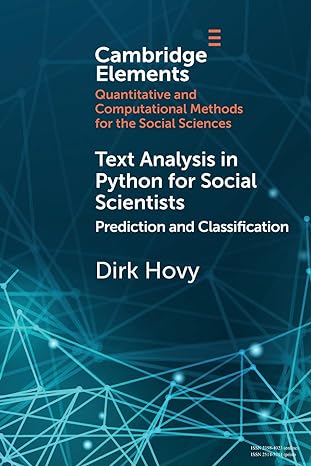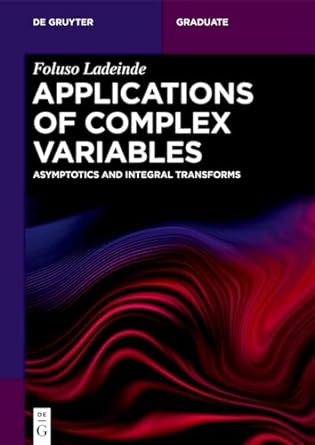Go back


Text Analysis In Python For Social Scientists Prediction And Classification(New Edition)
Authors:
Dirk Hovy

Cover Type:Hardcover
Condition:Used
In Stock
Include with your book
Free shipping: April 04, 2024Popular items with books
Access to 3 Million+ solutions
Free ✝
Ask 10 Questions from expert
200,000+ Expert answers
✝ 7 days-trial
Total Price:
$0
List Price: $22.00
Savings: $22(100%)
Book details
ISBN: 1108958508, 978-1108958509
Book publisher: Cambridge University Press
Get your hands on the best-selling book Text Analysis In Python For Social Scientists Prediction And Classification New Edition for free. Feed your curiosity and let your imagination soar with the best stories coming out to you without hefty price tags. Browse SolutionInn to discover a treasure trove of fiction and non-fiction books where every page leads the reader to an undiscovered world. Start your literary adventure right away and also enjoy free shipping of these complimentary books to your door.
Text Analysis In Python For Social Scientists Prediction And Classification New Edition Summary: Text contains a wealth of information about about a wide variety of sociocultural constructs. Automated prediction methods can infer these quantities (sentiment analysis is probably the most well-known application). However, there is virtually no limit to the kinds of things we can predict from text: power, trust, misogyny, are all signaled in language. These algorithms easily scale to corpus sizes infeasible for manual analysis. Prediction algorithms have become steadily more powerful, especially with the advent of neural network methods. However, applying these techniques usually requires profound programming knowledge and machine learning expertise. As a result, many social scientists do not apply them. This Element provides the working social scientist with an overview of the most common methods for text classification, an intuition of their applicability, and Python code to execute them. It covers both the ethical foundations of such work as well as the emerging potential of neural network methods.
Customers also bought these books
Frequently Bought Together
Top Reviews for Books
Keith lebanowski
( 5 )
"Delivery was considerably fast, and the book I received was in a good condition."










